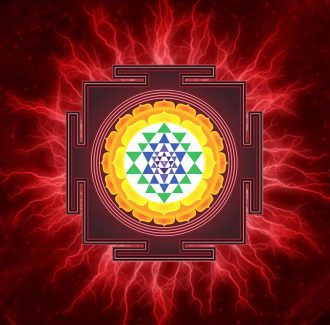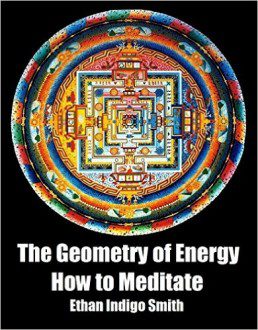Contributing writer for Wake Up World
One of my favorite meditations is extracted from Buddhist lessons, and relates to the four dimensions of geometry. Known as “the Seed of Buddha Meditation”, this practice is one of the most powerful meditations I have learned. It is believed that the Buddha himself practiced and taught this meditation, just as I learned it from a Tibetan Buddhist monk from Nepal.
This meditation is direct and simple, but can open us up to receive profound and infinitely complex spiritual lessons. In fact, despite its simplicity, the profundity of each of the ideas in this meditation cannot be understated. Each of the concepts has been elaborated on for centuries since the time of Buddha, and so the presentation here is, of course, a simplification of the ideas and processes that might be endlessly explored and refined as part of our own personal inward exploration.
In this article I will provide the steps for you to perform this powerful meditation practice, but as always, it is the energy we bring to these principles and symbols that contains the real spiritual power of this meditation — the highest potential for universal connection, which is inherently within us all.
[pro_ad_display_adzone id=”110028″]
The rhythm of this 3-part meditation moves from mindfulness of a particular idea or thought, to mindfulness of no idea — where as much as possible, we think on nothingness — to mindfulness of the next idea, and so on. These periods of nothingness give us a chance to relax, to break from processing each thought or concept this meditation presents — which can all be quite intense — before moving on. The meditation then concludes with the Buddha Breath exercise.
Like many meditations, this practice is derived from important Buddhist concepts and teachings, The Four Thoughts and The Four Immeasurables. So, there are lessons to be gained for both the secular and meditative practitioners, from beginners to the advanced.
Each step of the process can take as long as you like, and the timing may differ each time you practice it. Meditate on each idea as deeply as you feel appropriate, considering your own time constraints, circumstances, realizations and states of mind etc.
The Seed of Buddha Meditation
To begin, sit in a comfortable cross-legged position (on a meditation pillow, if you prefer.) Sit for a time to simply settle into absorption and relaxation, focusing on the breath.
The first part of the meditation consists of contemplating The Four Thoughts of Buddhist philosophy, which turn the mind toward Dharma; the precious human body, impermanence, karma and samsara. The second part consists of contemplating The Four Immeasurables. Contemplate on each of the following ideas using personal experiences and/or universal understandings as your guide.
The Four Thoughts
The freedoms and advantages of our precious human incarnation.
The precious human body idea essentially comes from understanding that every being is precious, and spontaneous Buddhahood could happen at any time, yet we have a precious human body that is particularly capable of gaining enlightenment, and even assisting others in the process. Contemplate the preciousness of your human body, and others’, then allow yourself to come to the point of gentle concentration on your own relaxation. Breathe in a relaxed manner.
The truth of impermanence and change.
Everything is impermanent; ourselves and the condition of our world. Allow yourself to contemplate the changing, dynamic nature of existence at all levels. Then pause again, gently becoming mindful of your own relaxation and breath, taking whatever time you need to clear your mind.
The workings of karma.
Contemplate the workings of the universal law of Karma; that of cause and effect. In the Buddhist tradition, karma refers to the cycle of actions driven by intention leading to future consequences, and therefore, future actions and intentions. Reflect on personal experiences and/or universal understandings of this concept, then, when you are ready, allow yourself to become mindful of your own relaxation and breath.
The suffering of living beings within samsara.
Samsara refers to the plane of existence and suffering; the endless cycle of birth, existence and death we are all in, perpetuated by desire, ignorance (relating to concepts of reality) and their resulting karma. It is the opposite is nirvana; the nothingness, the bliss that just IS, and the essence beyond birth, death and duality. Contemplate this concept, then again, when you are ready, allow your mind to return to your breath.
It is interesting to note, The Four Thoughts (not so coincidentally) relate to the four dimensions of geometry; the single point symbolizes the individual precious human body, the line symbolizes impermanence (ie. through movement), karma is illustrated by the circular exchange of energy, and Samsara relates to volume (ie. 3-dimensional shape).
The Four Immeasurables
The second part of this meditation uses the same pattern of mindful focus followed by periods of relaxation, this time, contemplating The Four Immeasurables of Buddhist philosophy.
Buddha is known to have pointed to 4 aspects or stages of love, known as The Four Immeasurables; the love for self, love for others, love for the happiness of others, and love for all beings in equanimity. It is commonly understood that each stage requires the preceding stage of love to be achieved. However, for the purposes of this meditation, we will begin by focusing outwardly — on our love for all beings in equanimity — and end by focusing inwardly — on our love for self.
So, as with The Four Thoughts, using personal experiences and/or universal understandings as your guide, contemplate on each of The Four Immeasurables, returning your awareness to your breath and your relaxation between each concept.
Love for all beings in equanimity.
Love for the happiness of others.
Love for others.
Love for self.
Like The Four Thoughts, The Four Immeasurables are also symbolic of the four dimensions of geometry. Love for the self is symbolized by individual point, love for others is symbolized by the linear connection, love for the happiness of others is (like karma) circular and all-connecting, and love for all beings in equanimity is voluminous and all-inclusive.
Buddha Breath
The third and final part of the meditation is Buddha Breath.
On every inhale, imagine you are removing the ignorance and suffering of others (other people specifically, and those generally locally and globally.)
On every exhale, imagine you are sending them compassion and happiness. Imagine you are a conduit of Buddha consciousness, or supreme consciousness. Imagine that you are a vehicle for transmuting suffering and ignorance into happiness and compassion, which happens through you, instigated by you, connecting above and below.
On every exhale, imagine lotus flowers from Buddha consciousness being transported through you, and on every inhale, imagine the fiery pain and suffering of Samsara being drawn into a fiery lotus flower that remains in front of you, burning up the ignorance and suffering that is drawn into it.
Finish the meditation by keeping a lotus flower for yourself, perhaps placing on the crown of your head, and imagining light shining through you and onto you, cleansing you of any leftover negativity.
1 Love,
Ethan
The Geometry of Energy: How to Meditate
A book by author Ethan Indigo Smith:
‘The Geometry of Energy: How to Meditate’ explores meditation and meditative energies through the sacred dimensions of geometry. Simple and profound, it is an empowering four-step meditation designed to lead to individuation, self-development, and an enhanced understanding of energy and vibration.
Useful to meditation newcomers and longtime practitioners alike, ‘The Geometry of Energy’ provides insights into a variety of meditative processes for psychological and spiritual cleansing and enhancement.
‘The Geometry Of Energy: How To Meditate’ is available here on Amazon.
About the author:
 Activist, author and Tai Chi teacher Ethan Indigo Smith was born on a farm in Maine and lived in Manhattan for a number of years before migrating west to Mendocino, California. Guided by a keen sense of integrity and humanity, Ethan’s work is both deeply connected and extremely insightful, blending philosophy, politics, activism, spirituality, meditation and a unique sense of humour.
Activist, author and Tai Chi teacher Ethan Indigo Smith was born on a farm in Maine and lived in Manhattan for a number of years before migrating west to Mendocino, California. Guided by a keen sense of integrity and humanity, Ethan’s work is both deeply connected and extremely insightful, blending philosophy, politics, activism, spirituality, meditation and a unique sense of humour.
Ethan’s publications include:
- 108 Steps to Be in The Zone, a set of 108 meditative practices for self discovery and individual betterment, including techniques to develop balance, transmute sexual energy.
- The Matrix of Four, The Philosophy of the Duality of Polarity on the subject of developing individual consciousness.
- The Little Green Book of Revolution an inspirational book based on ideas of peaceful revolution, historical activism and caring for the Earth like Native Americans.
- The Geometry of Energy: How to Meditate: Simple and profound, this book offers an empowering four-step meditation, focused through the sacred dimensions of geometry.
- The Complete Patriot’s Guide to Oligarchical Collectivism, an insightful exploration of history, philosophy and contemporary politics.
- The controversial book, Terra-ist Letters, a work that humorously contrasts two very serious issues: the prohibition of marijuana and the promotion of nuclear experimentation.
For more, visit Ethan on Facebook and check out Ethan’s author page on Amazon.
Recommended reading by Ethan Indigo Smith:
- 11:11 – A Call to the Indigos
- The Mandala: The Sacred Geometry of Meditation
- Guardians of the Earth Unite! American Indian Prophecy, The Medicine Wheel, and The Four Sacred Directions
- A Little Green Revolution: the Rainbow Warriors will Heal the Earth Mother
- Why “Alternative” Media is the New Mainstream
- Tibetan Rites of Rejuvenation: a Guide to Meditation and Breath
- The Common Origins of Religions and Theology
- Understanding Ascension: The Geometry of Energy
- The Big “If” – What If Marijuana and Hemp Had Never Been Prohibited?
- Mutually Agreed Peace: Ending The Doctrine of Perpetual War
- The Dangers of Institutional Thinking – Lessons from 1984, The Matrix, and The Allegory of The Cave
- Individuality and Spirituality in the Age of Institutional Rule
[pro_ad_display_adzone id=”110027″]








